 |
 |
 |
| |
Lonafarnib With Ritonavir Slows HDV in 48-Week Placebo Trial
|
| |
| |
EASL Congress 2023, June 21-24, Vienna
Mark Mascolini
A 407-person placebo-controlled phase 3 trial, D-LIVR, established the anti-HDV efficacy of ritonavir-boosted lonafarnib and boosted lonafarnib plus pegylated interferon-alfa2a (PEG-IFN-Alfa) through 48 weeks [1]. But results show how tough it may be to contain this virus: About one third of participants taking the triple combination attained either the 48-week virologic or biochemical endpoint, while 1 in 5 met both endpoints. But one finding suggests a time-limited oral lonafarnib-containing regimen may be possible in certain people with chronic HDV infection.
Lonafarnib disrupts assembly of hepatitis D virus (HDV) by inhibiting phenylation of the large delta antigen (LHDAg) of HDV and thus preventing its binding to hepatitis B surface antigen (HBsAg) [2]. (HDV requires HBV coinfection for its propagation.) Previous studies indicated the value of boosting lonafarnib with ritonavir with or without pegylated interferon [3,4].
The phase 3 D-LIVR study compared (1) ritonavir-boosted lonafarnib, (2) those agents plus PEG-IFN-Alfa, (3) PEG-IFN-Alfa alone, and (4) placebo in people with chronic HDV infection. Participants had to have compensated liver disease, HDV RNA above 500 IU/mL, alanine aminotransferase (ALT) 1.3 to 10 times the upper limit of normal, and HBV DNA below 20 IU/mL. Participants took their randomized regimen for 48 weeks, and follow-up lasted an additional 24 weeks.
Together the 52 people randomized to placebo, the 178 randomized to lonafarnib+ritonavir (LFN+RTV), the 125 randomized to LFN+RTV+Alfa, and the 52 randomized to Alfa alone averaged 42.7 years in age; 69% were men, 73% white, and 23% Asian. Three quarters lived in Europe, 15% in Asia, 6% in North America, and 5% elsewhere. ALT averaged 100 U/L when the study began and HDV RNA 500,000 IU/mL. Median HBsAg stood at 40,000 IU/mL.. About one quarter of participants had cirrhosis.
In a 405-person intent-to-treat population, after 48 weeks 19.2% assigned to LNF+RTV+Alfa (P < 0.0001 vs placebo), 10.1% assigned to LNF+RTV (P = 0.0044 vs placebo), 9.6% assigned to Alfa, and 1.9% assigned to placebo met the composite primary endpoint of at least a 2-log (100-fold) drop in HDV RNA plus ALT normalization. (FDA guidance considers this composite endpoint one that could reasonably predict future clinical benefit, according to D-LIVR investigators.) Respective proportions with at least a 48-week 2-log drop in viral load alone were 32% (P < 0.0001 vs placebo), 14.6% (P = 0.0026 vs placebo), 36.5%, and 1.8%. Proportions who reached an undetectable HDV RNA at week 48 were 20.8% (P < 0.001 vs placebo), 8.4% (P = 0.119 vs placebo, not significant), 26.9%, and 3.8%. For the ALT normalization endpoint alone, respective percentages were 34.4% (P < 0.0001 vs placebo), 24.7% (P = 0.003 vs placebo), 11.5%, and 7.7%. These single-variable endpoints demonstrate that PEG-IFN-Alfa makes a big contribution to virologic response in the 3-drug combination but little contribution to the biochemical (ALT) response.
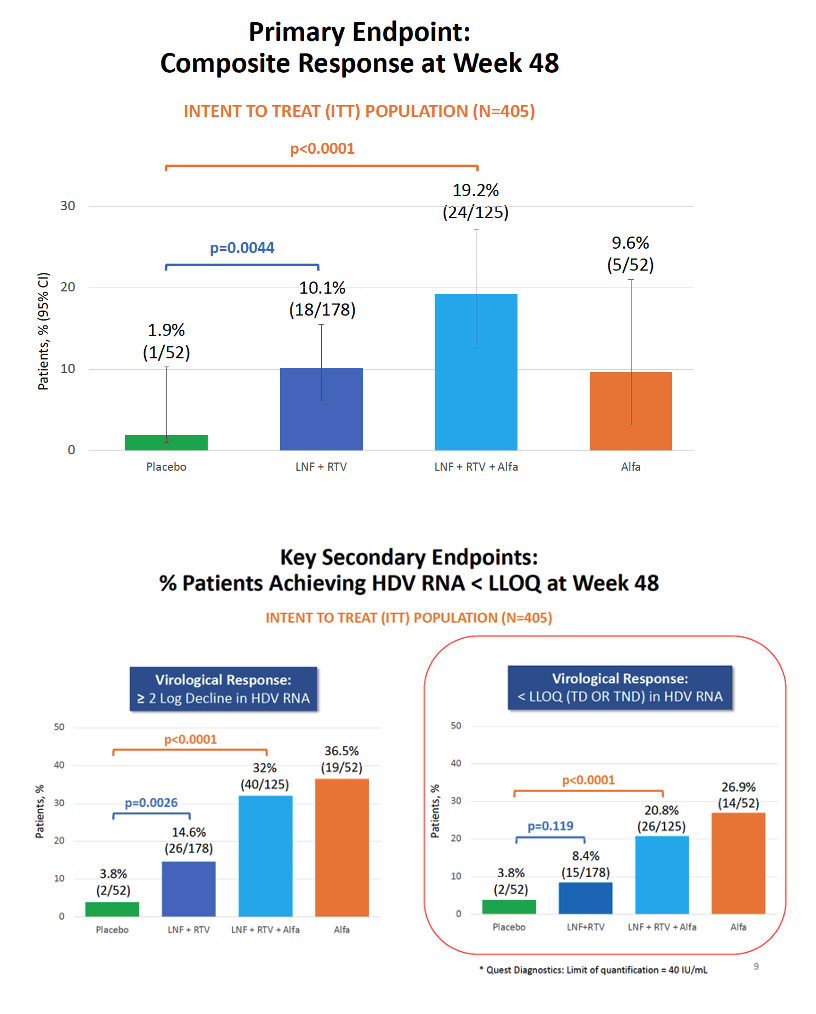

Statistical analysis tied three factors to a composite virologic/biochemical response at week 48: HBsAg below versus above 1000 and female versus male sex each more than doubled odds of a composite response. Age below versus above 45 years lowered chances of a composite response.
Among 312 people who completed treatment at week 48 and continued follow-up to week 72, proportions still reaching the composite endpoint through week 72 were 29.3% with LNF+RTV+Alfa (P < 0.0001 vs placebo), 15.6% with LNF+RTV (P = 0.01 vs placebo), 15.4% with Alfa alone, and 0% with placebo. Notably, both response rates in the two LNF arms were greater at week 72 than at week 48.
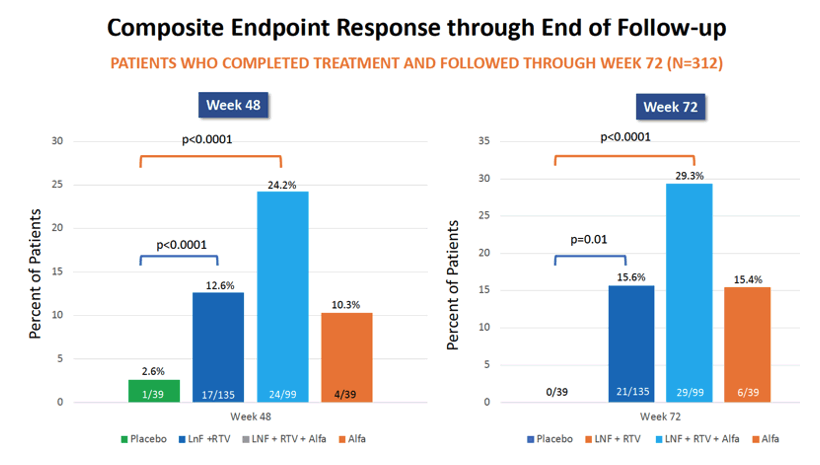
Similar proportions randomized to LNF+RTV+Alfa (18%), LNF+RTV (19%), Alfa (21%), and placebo (19%) discontinued treatment during the study. Respective proportions who missed at least 1 dose were 51%, 43%, 54%, and 27%. Proportions with a serious treatment-emergent adverse event were 14%, 8%, 10%, and 4%. The only person with a TEAE leading to death and attributed to study drug took PEG-IFN-Alfa alone.
A higher proportion in the LNF+RTV+Alfa arm (52%) reduced their dose than in the LNF+RTV arm (26%) or the Alfa arm (44%). Respective proportions in those groups who later raised their dose were 54%, 57%, and 46%. Proportions who missed a dose stood at 51% in the LNF+RTV+Alfa group, 43% in the LNF+RTV group, and 54% in the Alfa group. Respective proportions who restarted treatment were 89%, 95%, and 93%. An adverse event explained the dose interruption in 27% randomized to LNF+RTV+Alfa, 11% randomized to LNF+RTV, and 20% randomized to Alfa.
D-LIVR investigators speculated that the statistically significant improvements in histology in the 2 combination arms suggest that such improvements could predict better long-term clinical outcomes. They believe the sustained response rate in the 24 weeks after therapy stopped "suggests finite, oral-based therapy may be possible in a subset of patients" with chronic HDV infection.
References
1. Etzion O, Hamid SS, Asselah T, et al. Week 48 results of the phase 3 D-LIVR study, a randomized double-blind, placebo-controlled trial evaluating the safety and efficacy of lonafarnib-boosted with ritonavir with or without peginterferon alfa in patients with chronic hepatitis delta. EASL Congress 2023, June 21-24, Vienna. Abstract GS-012.
2. Glenn JS, Watson JA, Havel CM, White JM. Identification of a prenylation site in delta virus large antigen. Science. 1992;256:1331-1333. doi: 10.1126/science.1598578. https://pubmed.ncbi.nlm.nih.gov/1598578/
3. Yurdaydin C, Keskin O, Kalkan Ç, et al. Optimizing lonafarnib treatment for the management of chronic delta hepatitis: The LOWR HDV-1 study. Hepatology. 2018;67:1224-1236. doi: 10.1002/hep.29658. https://pubmed.ncbi.nlm.nih.gov/29152762/
4.Yurdaydin C, Keskin O, Yurdcu E, et al. A phase 2 dose-finding study of lonafarnib and ritonavir with or without interferon alpha for chronic delta hepatitis. Hepatology. 2022;75:1551-1565. doi: 10.1002/hep.32259. https://pubmed.ncbi.nlm.nih.gov/34860418/
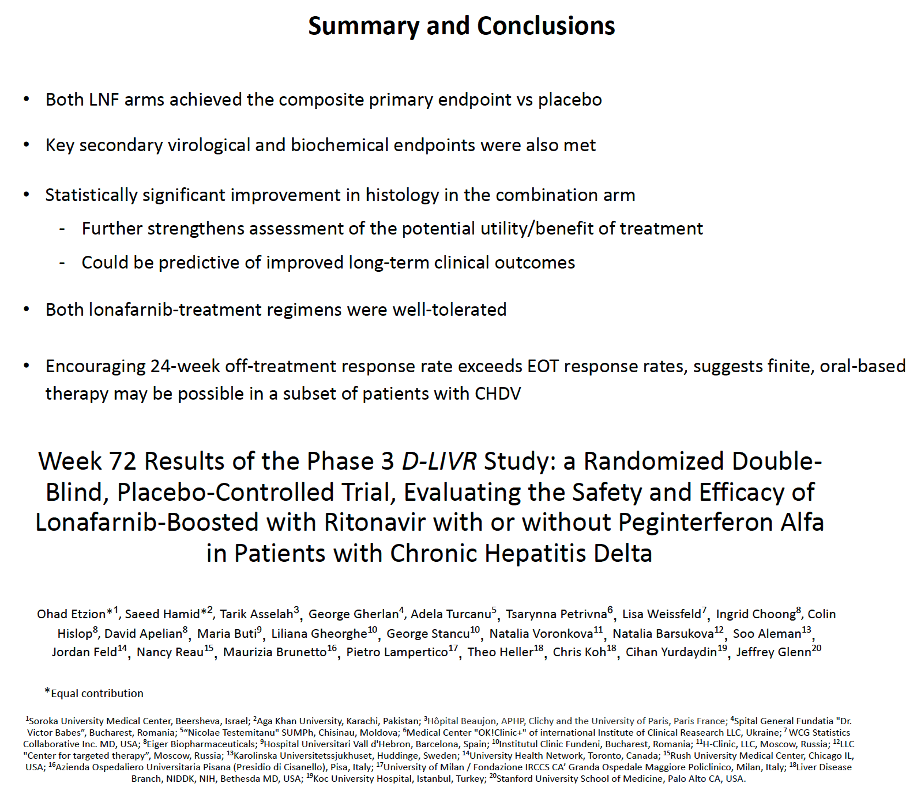
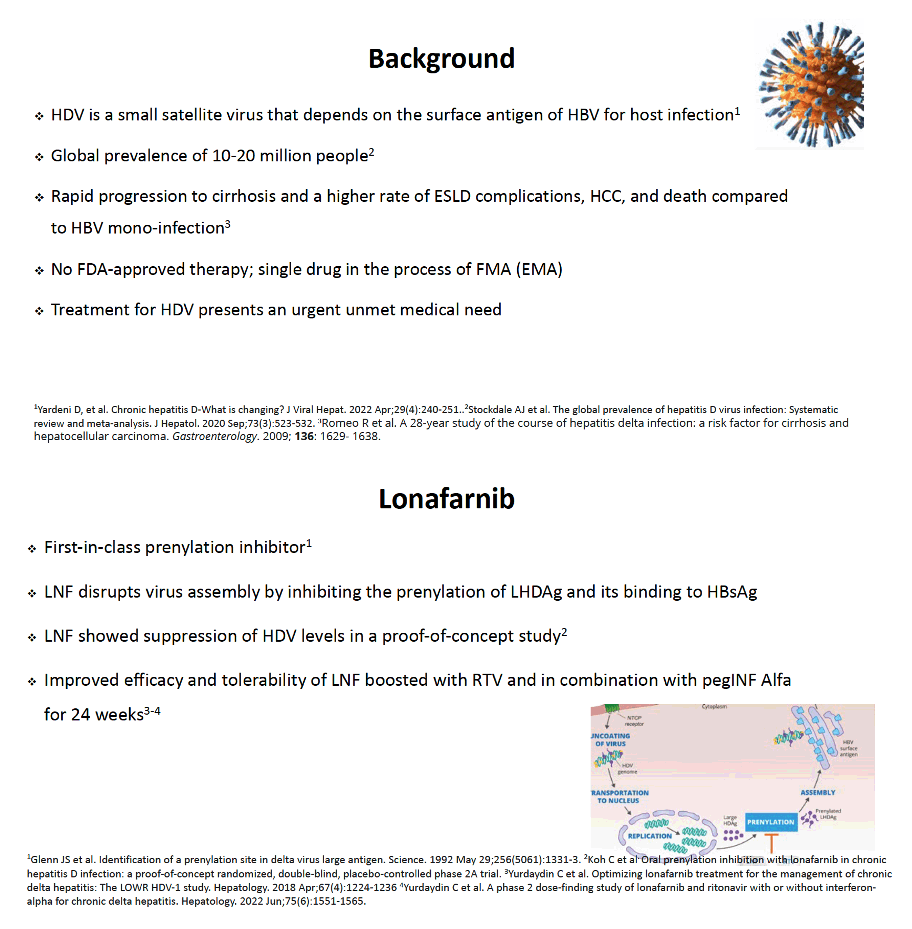
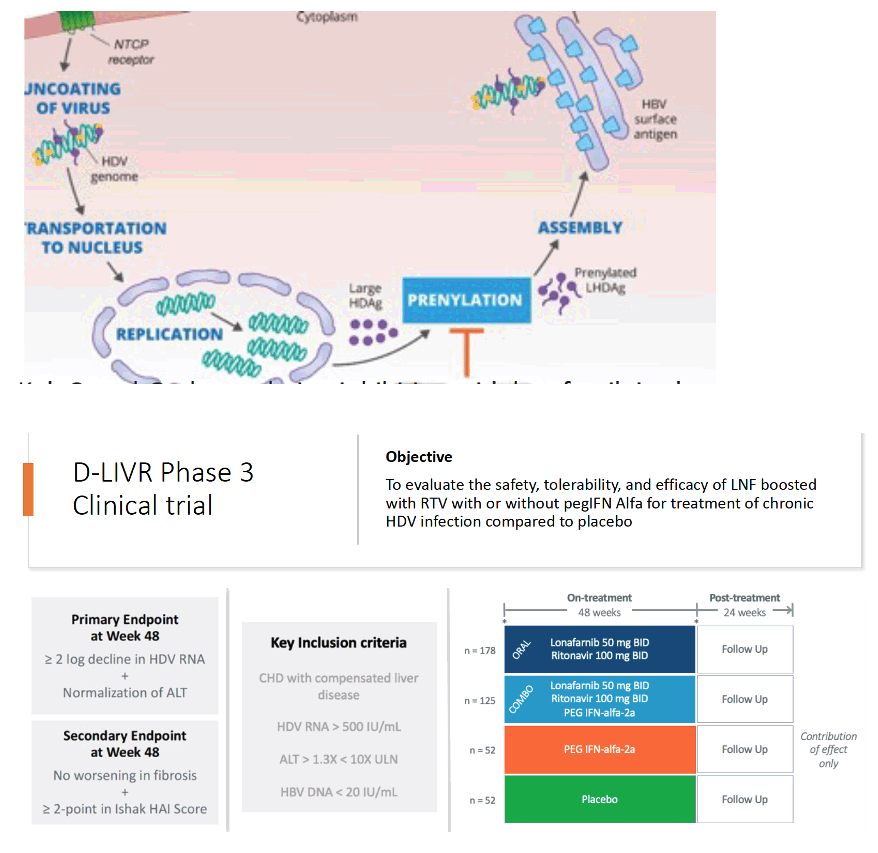
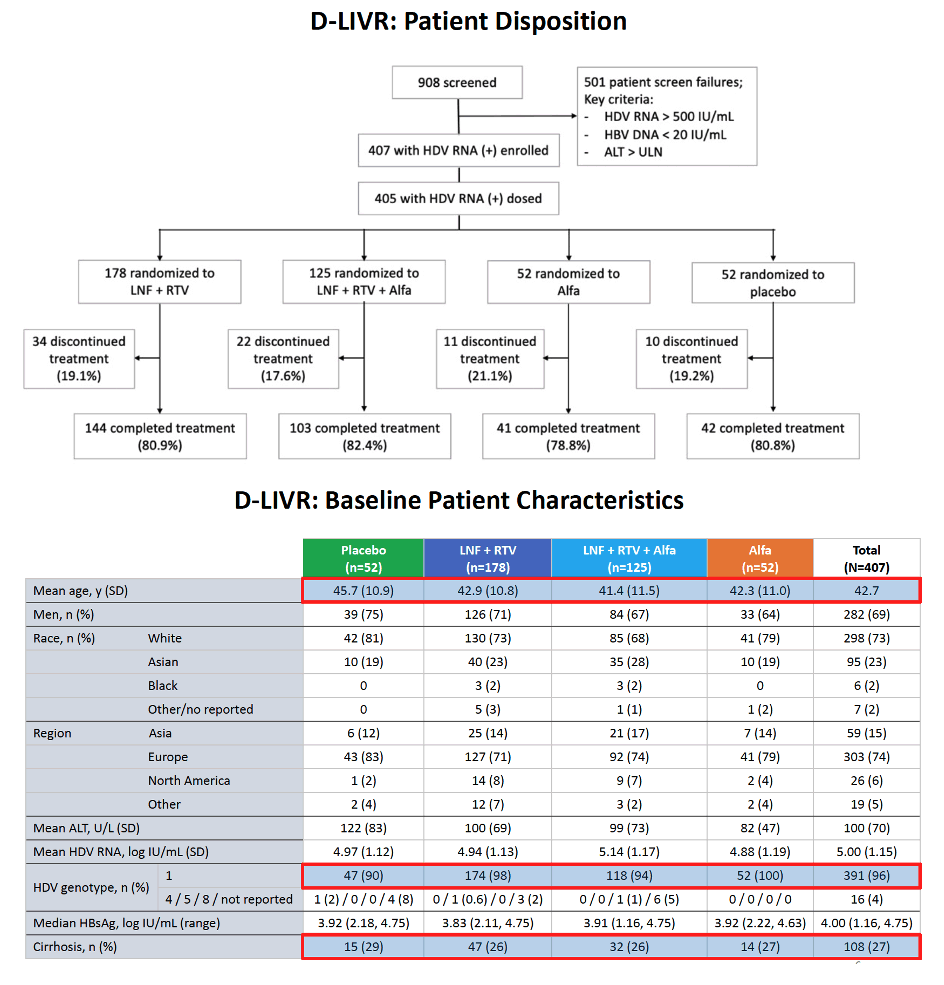
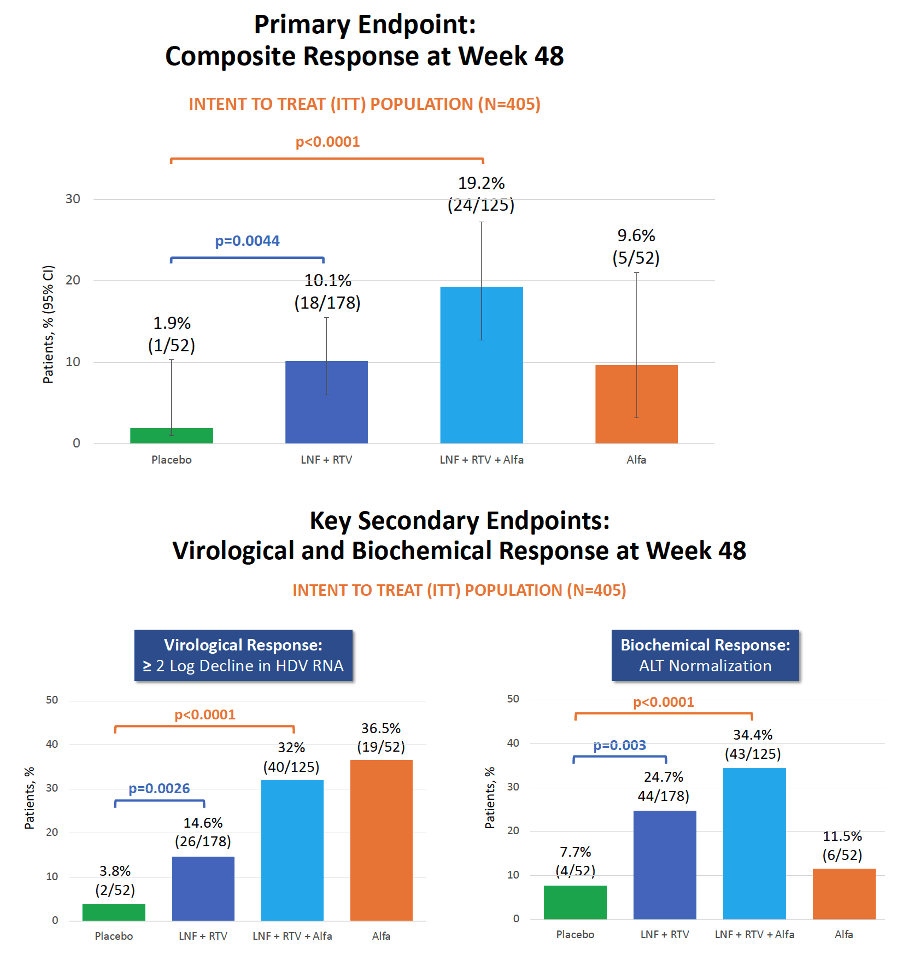
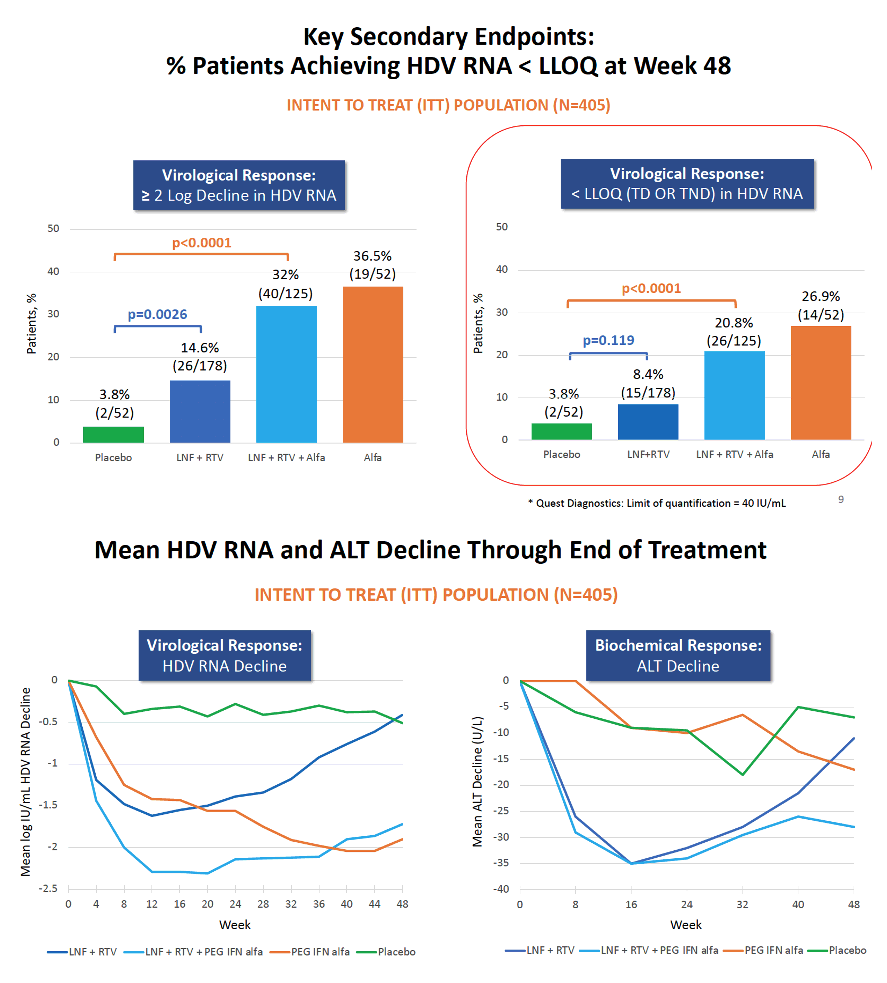
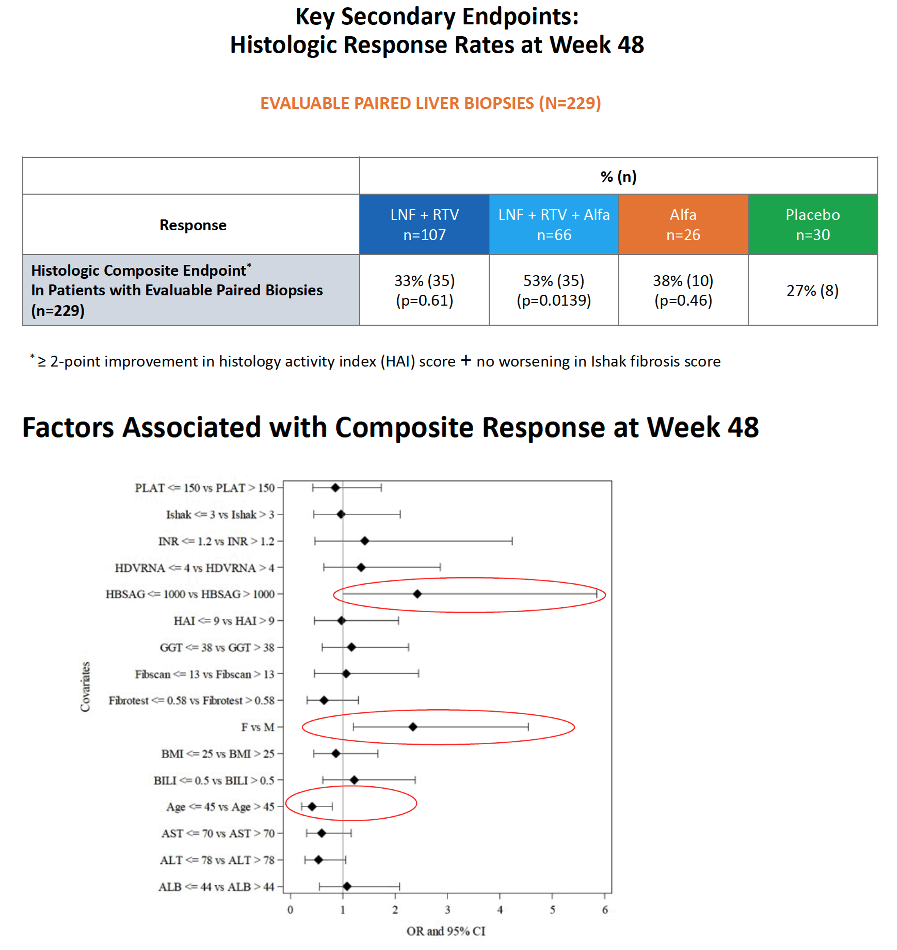
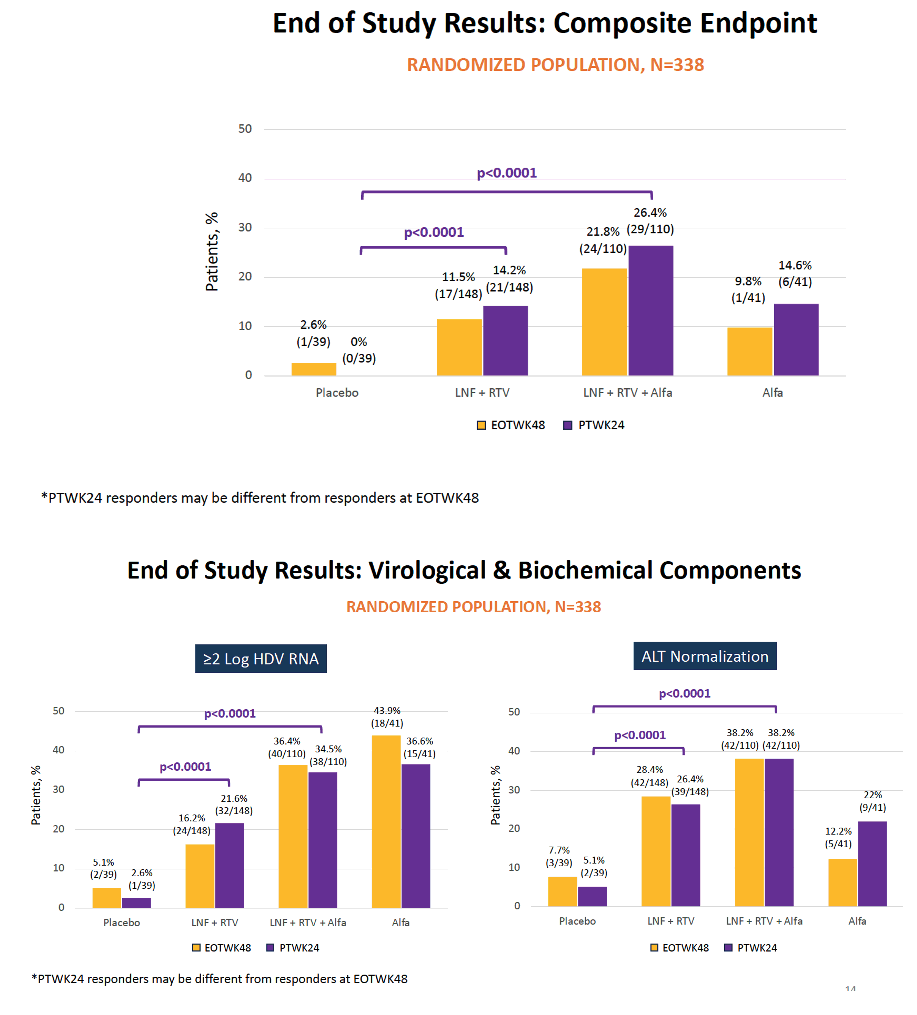
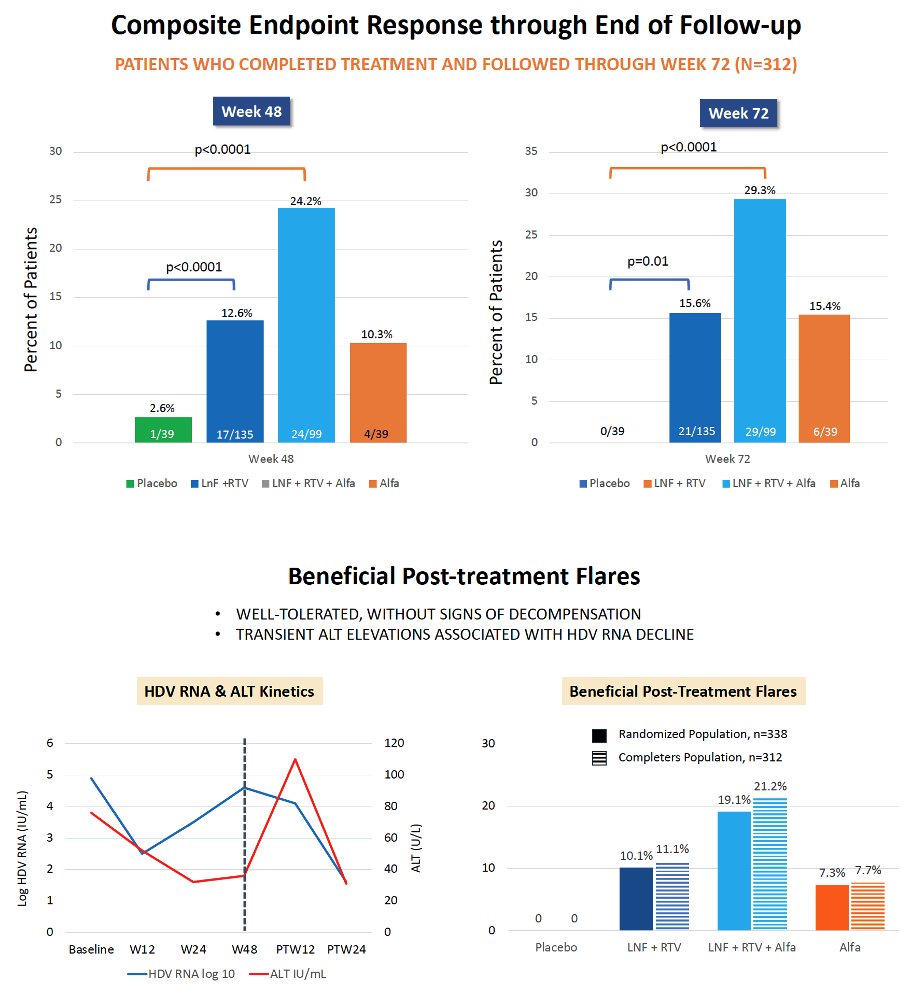
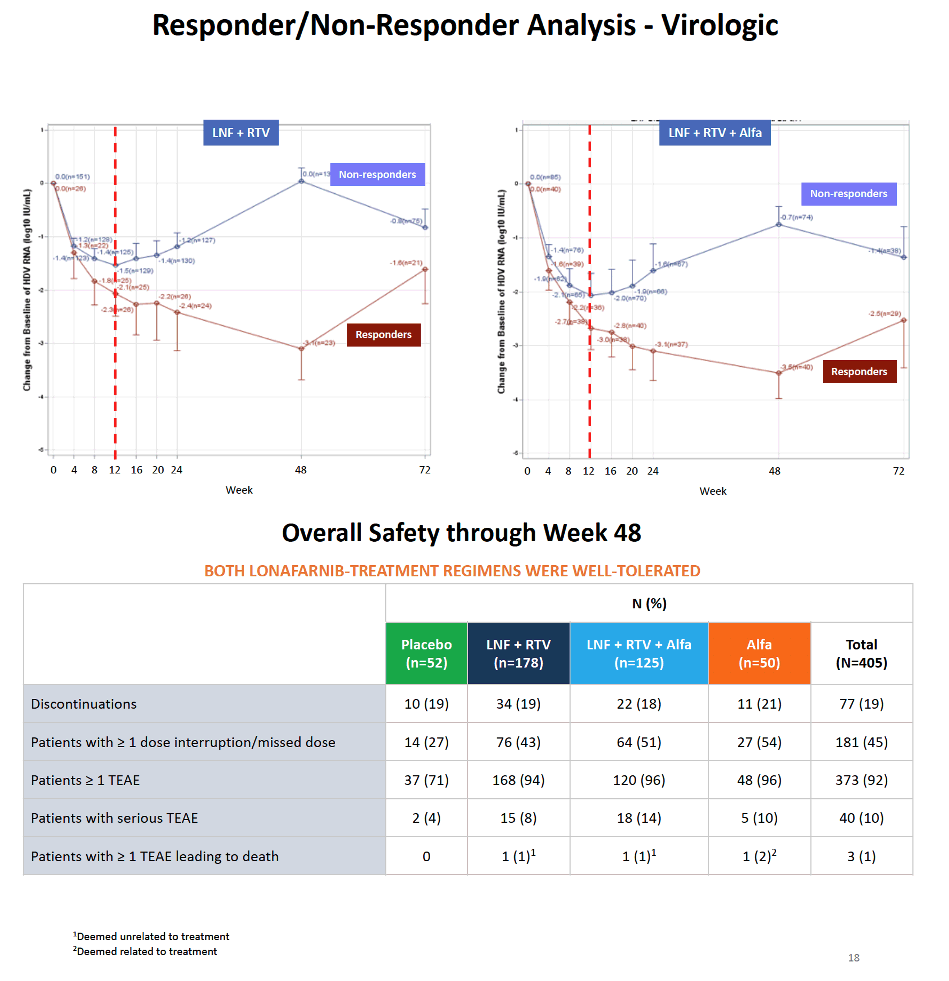

|
| |
|
 |
 |
|
|